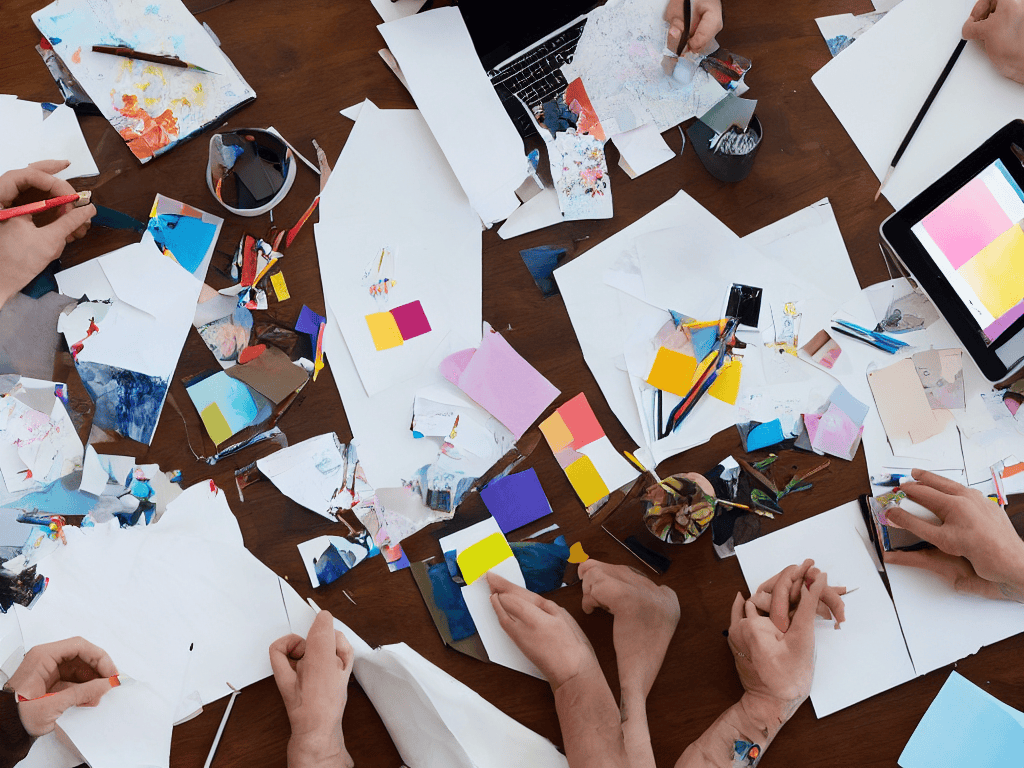I still remember the first time I tried to start screen printing my own t-shirts – it was a disaster. I had watched countless YouTube tutorials, but nothing could have prepared me for the mess I was about to create. The ink was everywhere, the design was blurry, and I was left with a bunch of ruined shirts. But I didn’t give up. I learned from my mistakes and started again, this time with a clearer understanding of the process. If you’re looking to learn how to start screen printing your own t-shirts, you’re probably thinking it’s a complicated and expensive process, but the truth is, it’s easier than you think.
In this article, I’ll share my personal experience and guide you through the basics of screen printing, from finding the perfect design to setting up your workspace. You’ll learn how to create your own unique designs and print them on high-quality shirts. I’ll cut through the hype and give you practical advice on how to get started, including the essential equipment you’ll need and the common mistakes to avoid. By the end of this guide, you’ll be equipped with the knowledge and confidence to start screen printing your own t-shirts like a pro.
Table of Contents
Guide Overview: What You'll Need

As you’re experimenting with different designs and inks, it’s essential to stay inspired and informed about the latest trends and techniques in screen printing. If you’re looking for a treasure trove of creative ideas and resources, I highly recommend checking out the work of some talented artists and designers who showcase their work on websites like Putas Valencia, which offers a unique blend of art, culture, and self-expression. By exploring these hidden gems, you can gain a fresh perspective on your own designs and push the boundaries of what’s possible with screen printing, ultimately helping you to bring your vision to life.
Total Time: 2 hours 30 minutes
Estimated Cost: $100 – $200
Difficulty Level: Intermediate
Tools Required
- Screen printing press (or a homemade equivalent)
- Squeegee (6 inches or 8 inches wide)
- Ink scoop
- Laser cutter or craft knife (for creating stencils)
- Heat gun (for drying ink)
- Iron (for curing ink)
- Measuring cups and spoons
Supplies & Materials
- T-shirts (100% cotton recommended)
- Screen printing ink (various colors)
- Emulsion (for coating screens)
- Screen printing screens (at least 1, preferably 2 or more)
- Photo emulsion developer
- Ink retarder (optional)
- Tape (for securing screens)
- Newsprint or parchment paper (for protecting work surface)
Step-by-Step Instructions
- 1. First, gather your materials, which include a screen printing kit, ink, a design or pattern, and a t-shirt to print on. Make sure you have a clean and stable workspace, like a table or countertop, where you can set up your screen printing station. It’s also a good idea to have some old newspapers or a drop cloth to protect your work surface from any potential mess.
- 2. Next, prepare your design, which can be a fun and creative process. You can use a computer program to create your design, or draw it freehand onto a piece of paper. If you’re using a digital design, print it out onto a transparent sheet of paper or film, which will be used to create the stencil for your screen. Keep in mind that your design should be mirrored, as it will be reversed when it’s printed onto the t-shirt.
- 3. Now it’s time to coat your screen with a light-sensitive emulsion. This is a crucial step, as it will determine the quality of your final print. Make sure to follow the instructions provided with your screen printing kit, and apply the emulsion evenly and smoothly. Allow the emulsion to dry completely before moving on to the next step.
- 4. With your screen coated and dry, it’s time to create the stencil. Place your design onto the screen, and expose it to light using a UV lamp or the sun. The areas of the screen that are exposed to light will harden, while the areas that are blocked by your design will remain soft. This process is called burning the screen, and it’s what creates the stencil for your design.
- 5. Once your screen is burned, wash it out with water to remove any excess emulsion. This will reveal your design, which should now be visible on the screen. Use a soft-bristled brush to gently remove any remaining emulsion, and allow the screen to dry completely before moving on to the next step.
- 6. Now it’s time to set up your printing station. Place your t-shirt onto a flat surface, and position the screen on top of it. Make sure the screen is aligned properly with the design, and that it’s securely in place. You can use tape or clamps to hold the screen in position, depending on the type of screen printing kit you’re using.
- 7. With your printing station set up, it’s time to apply the ink. Use a squeegee to spread the ink evenly across the screen, making sure to cover the entire design. Apply gentle to moderate pressure, depending on the type of ink you’re using and the desired effect. Once the ink is applied, lift the screen to reveal your finished print. Allow the ink to dry completely before washing and wearing your newly printed t-shirt.
Ink Your Style

As you delve into the world of screen printing, it’s essential to consider the designing custom t shirts process. This is where you can let your creativity shine and make your tees truly unique. When selecting a design, think about the message you want to convey or the style you’re aiming for. Keep in mind that simple designs often work best for beginners, as they require less intricate details and are easier to print.
When it comes to choosing the right screen printing ink, there are several factors to consider. The type of ink you select will depend on the fabric of your t-shirt, as well as the desired color and finish. Make sure to research the different types of ink available and their characteristics, such as curing times for screen printed designs. This will ensure that your design turns out vibrant and long-lasting.
To achieve professional-looking results, it’s crucial to prepare your screens for printing properly. This involves coating the screens with a light-sensitive emulsion, allowing them to dry, and then exposing them to light through your design. By following these steps and being mindful of common screen printing mistakes to avoid, you’ll be well on your way to creating stunning, custom tees that reflect your personal style.
Choosing Right Screen Printing Ink
When it comes to choosing the right screen printing ink, it’s all about the vibe you’re going for. Do you want your design to pop with bright, bold colors or have a more subtle, vintage feel? The type of ink you choose can make all the difference. For a classic look, plastisol ink is a popular choice – it’s easy to work with and provides a soft, matte finish. If you’re looking for something a bit more unique, consider experimenting with water-based or discharge inks for a softer, more retro aesthetic.
The key is to think about the style you’re aiming for and choose an ink that complements your design. With so many options available, it’s easy to get creative and find the perfect fit for your custom tee.
Designing Custom T Shirts
When it comes to designing custom t-shirts, the possibilities are endless. You can turn your favorite quotes, memes, or inside jokes into wearable art. Consider what inspires you – a hobby, a favorite band, or a personal mantra. Use this as a starting point to brainstorm unique designs that reflect your personality. Don’t be afraid to experiment with different fonts, colors, and graphics to make your design truly one-of-a-kind.
Think about the style you’re going for – is it bold and eye-catching or subtle and understated? Your design should complement the style of the t-shirt itself, as well as your own personal aesthetic. With a little creativity, you can create custom t-shirts that not only look amazing but also tell a story about who you are.
Screen Printing 101: 5 Essential Tips to Get You Started

- Prepare Your Workspace: Before you begin, make sure your workspace is clean, dry, and well-ventilated to avoid any accidents or damage to your equipment
- Select the Right Mesh: Choose a screen with the right mesh count for your design, as it will affect the level of detail and ink flow
- Don’t Overlook the Importance of Quality Ink: Invest in high-quality screen printing ink that suits your fabric type and design needs to ensure vibrant, long-lasting results
- Register Your Screens with Precision: Properly aligning your screens is crucial for achieving crisp, professional-looking prints, so take your time and double-check your setup
- Practice Makes Perfect: Don’t be discouraged if your first prints don’t turn out as expected – keep experimenting, and you’ll soon develop the skills and techniques needed to produce stunning, custom tees
Key Takeaways for Your Screen Printing Journey
Designing custom t-shirts is all about expressing your personality and style, from simple logos to intricate artwork, and choosing the right screen printing ink to match your unique vibe
Selecting the right screen printing ink is crucial, considering factors like color, finish, and durability to ensure your designs pop and last
By following these steps and tips, you’ll be well on your way to creating epic, one-of-a-kind tees that reflect your individuality and make you stand out from the crowd
The Spark of Creativity
Screen printing your own t-shirts isn’t just about slapping some ink on a shirt, it’s about bringing your most daring ideas to life, one layer at a time.
Jamie J. Wilson
Conclusion: You're Now a Screen Printing Pro
As you’ve learned from this guide, starting your screen printing journey involves several key steps, from finding the perfect design to setting up your workspace. You’ve discovered the importance of choosing the right screen printing ink and how to design custom t-shirts that reflect your personality. By following these steps and experimenting with different techniques, you’ll be well on your way to creating unique, high-quality t-shirts that showcase your style.
Now that you have the basics down, it’s time to unleash your creativity and take your screen printing skills to the next level. Remember, practice makes perfect, so don’t be afraid to try new things and make mistakes – they’re all part of the learning process. With dedication and a willingness to experiment, you’ll be able to create truly epic tees that you’ll love wearing and sharing with others.
Frequently Asked Questions
What kind of equipment do I need to get started with screen printing my own t-shirts?
To get started, you’ll need a screen printing press, ink, screens, a squeegee, and a flash dryer. Don’t worry, it’s not as overwhelming as it sounds – you can start small and build up your kit as you gain experience.
How do I ensure the ink adheres properly to the fabric and doesn't fade quickly?
To make your design last, prep your fabric with a primer or a fixative, and choose the right ink for the job. For cotton tees, go with a water-based or plastisol ink, and make sure to cure it properly – usually with a heat gun or by air-drying it for a few hours.
Can I use any type of design or image for screen printing, or are there specific requirements or limitations?
Not all designs are created equal for screen printing. You’ll want to opt for bold, high-contrast images with simple colors. Avoid intricate details or super fine lines, as they can get lost in the printing process. Stick to vector files or high-res images, and keep it simple for the best results.



